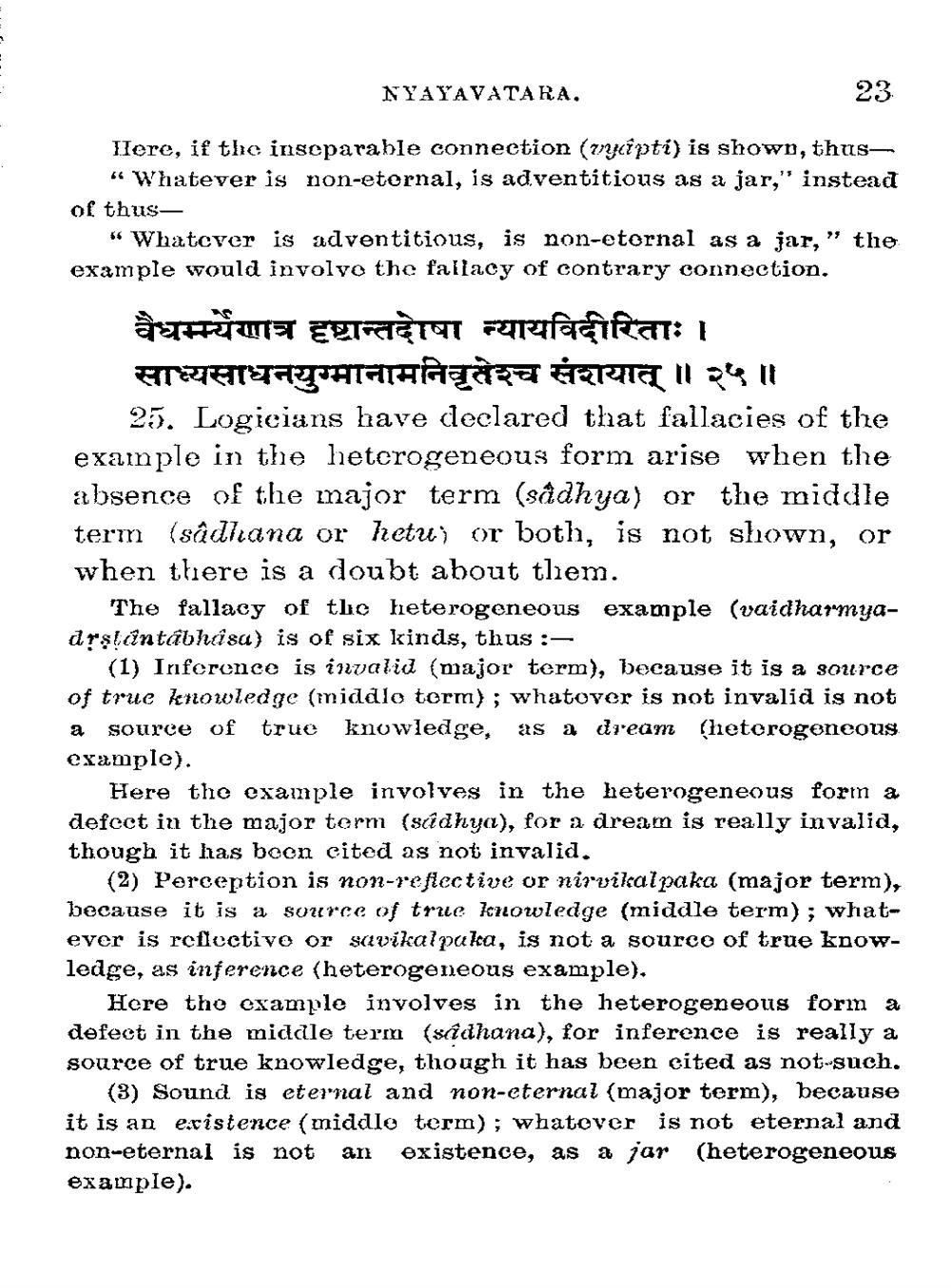________________
NYAYAVATARA,
23
Here, if the inseparable connection (ylipti) is shown, thus
“ Whatever is non-eternal, is adventitious as a jar," instead of thus
“ Whatever is adventitious, is non-etornal as a jar,” the example would involyo the fallacy of contrary connection.
वैधयेणात्र दृष्टान्तदोषा न्यायविदीरिताः । साध्यसाधनयुग्मानामनिवृतेश्च संशयात् ॥ २५॥
25. Logicians have declared that fallacies of the example in the heterogeneous form arise when the absence of the major term (sadhya) or the middle term (sâdhana or hetui or both, is not shown, or when there is a doubt about tliem.
The fallacy of the heterogeneous example (vaidharmyadrsłontábhasa) is of six kinds, thus :
(1) Inference is invalid (major term), because it is a source of true knowledge (iniddlo term); whatover is not invalid is not a source of true knowledge, as a dream (heterogeneous example).
Here the example involves in the heterogeneous form a defect in the major term (sâdhya), for a dream is really invalid, though it has been cited as not invalid.
(2) Perception is non-reflective or nirvilalpaka (major term), because it is a source of true knowledge (middle term); whatever is reflective or savikal puka, is not a source of true knowledge, as inference (heterogeneous example).
Here the example involves in the heterogeneous form a defect in the middle term (sadhana), for inference is really a source of true knowledge, though it has been cited as not-such.
(3) Sound is eternal and non-eternal (major term), because it is an existence (middle term); whatever is not eternal and non-eternal is not an existence, as a jar (heterogeneous example).




